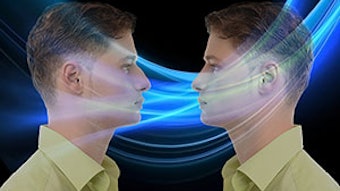Managing cerumen in children
Infants and children have frequent contact with their primary care physicians, both for regular well-child visits and for times of sickness. Otoscopic examination is typically performed at most visits, and cerumen is commonly identified, with studies citing a 10 percent prevalence of cerumen in the pediatric population and up to three-fold that amount in individuals with significant cognitive disabilities.
Dale A. Tylor, MD, MPH, Chair of the AAO-HNS Media and Public Relations Committee

Children with developmental delays or autism spectrum form a special subgroup that can be more at risk of placing their fingers or foreign bodies in the ears in response to otalgia from otogenic sources, such as otitis media or otitis externa, or referred sources including teething or pharyngitis. This can increase the risk of cerumen impactions. Children who require hearing aids or FM systems in their educational environments can also be at elevated risk of such impactions.
Even single-sided hearing deficiency from cerumen impaction can have significant impacts on language and academic performance and should not be discounted.
The Academy’s updated clinical practice guideline for cerumen impaction, found at http://www.entnet.org/cerumenCPG, is meant to aid all clinicians who diagnose and manage cerumen impactions. While these guidelines are not specific to children, there are some important points to understand in this special population.
- Familial practices strongly influence the habit of cleaning one’s ears, and as such, family members must be included in education about primary prevention efforts against cerumen impactions with proper ear hygiene. Using cotton tip swabs or other objects in the ear should be discouraged.
- Cerumen can significantly hinder visualization of the tympanic membrane or the ability to perform pneumatic otoscopy, which are critical components in the diagnosis of the common childhood problems of acute otitis media or chronic otitis media with effusion.
Factors that can modify the management of cerumen in children include the presence of tympanostomy tubes or tympanic membrane perforations, immune compromise, or diabetes, ear canal stenosis, the use of hearing aids, or active otitis externa.
- Children may be unable or unwilling to report hearing loss or other otologic complaints, and clinical suspicion for such issues must remain high, especially in situations of language or motor delays.
- Symptomatic cerumen should be removed by a clinician capable of treating pediatric patients, as should cerumen blocking the view of the tympanic membrane and middle ear in a child with suspected middle ear disease.
- In a setting of an uncooperative child, it is appropriate to refer to a clinician experienced in addressing otologic disease in pediatric patients using specialized equipment in the clinic, sometimes with the help of an assistant. In rare circumstances in which the risk of awake removal of cerumen is high, a sedated procedure may be necessary.
- Management of cerumen can include observation, cerumenolytic agents, irrigation, or manual removal with Cerumenolytic agents are not recommended before age three or when tympanic membrane is not intact.
- Ear candling or ear coning are not recommended, as they are not effective modalities to clear cerumen and can cause serious injuries including burns to the ear canal, damage to the tympanic membrane, conductive hearing loss, ear blockage, otitis externa, or fire.
- Outcomes should be assessed at the end of the in-office treatment of cerumen impaction with documentation of the resolution of the impaction. If the impaction cannot be completely cleared, the patient should be referred to a specialist. If symptoms of obstruction persist despite clearing the impaction, the clinician should evaluate the patient for an alternative diagnosis.
- Education of families about secondary prevention efforts against cerumen re-accumulation is useful when a child is prone to develop a cerumen

















